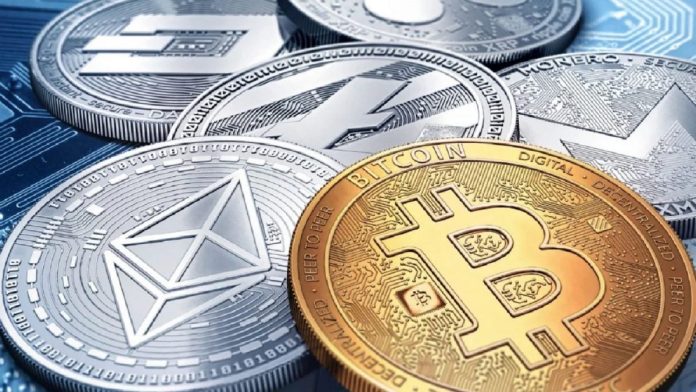Last Updated:
The digital asset ecosystem has evolved with growing institutional adoption. It includes cryptocurrencies, NFTs, and tokenized assets.

Digital assets are virtual, blockchain-based representations of value which can be owned and exchanged.
Authored by Srinivas L. CEO of 9Point Capital: The digital asset ecosystem has evolved well beyond its early years of skepticism and speculation. Institutional adoption has been growing, and blockchain technology has been instrumental in transforming industries from finance to real-world asset tokenisation, making it the perfect opportunity for investors.
If you are an individual investor interested in digital assets or an institution looking to diversify, understanding the essentials of profitable digital asset investing is crucial.
Here’s a beginner’s guide to starting smart and investing wisely.
Understanding the Basics
What are digital assets?
Digital assets are virtual, blockchain-based representations of value which can be owned and exchanged. In cryptocurrencies, we have assets such as Bitcoin, Ethereum and Solana, which serve as decentralised currencies on their respective blockchains or, in some cases, like that of Bitcoin, as stores of value.
Then come non-fungible tokens (NFTs) that provide provable ownership for one-of-a-kind digital assets, i.e., digital art, collectables, or real estate. Tokenized Real-World Assets (RWAs) are tokenized forms of physical assets, like commodities or real estate properties, allowing for fractional ownership and enhanced liquidity.
Assets like Exchange-Traded Funds (ETFs) give diversified exposure to digital assets through regulated instruments. Each asset class fits specific risk profiles, and aligning them is key to strong strategy building.
Building a Strong Foundation
Why Invest In Digital Assets?
Digital assets represent a paradigm shift in storing and transferring value, offering decentralisation, transparency, programmability and 24/7 liquidity. Long-term investors gain access to breakthrough technologies and asymmetric returns.
Begin with education
The most valuable asset is knowledge. Learn blockchain principles, types of blockchains, smart contracts, and wallets. Use reliable sources, monitor regulations, and engage with communities for practical insights.
Due diligence is paramount
The digital asset universe is rich with promise and danger. Assess the quality of a project’s team, read whitepapers, and review token supply models and user statistics. Make data-driven decisions, not hype-based ones.
Legal and Tax Considerations
Direct cryptocurrency holdings in India are taxed at a flat 30%, with 1% TDS per sale over Rs 50,000 (Rs 10,000 in some cases) thereby creating higher compliance and lower capital efficiency.
SEC-governed crypto ETFs, like BlackRock’s IBIT Bitcoin ETF, offer better treatment: 12.5% LTCG after 24 months, slab-based STCG, and zero TDS. Even now, in FY 2025-26, ETFs remain strategically advantageous despite upcoming budget changes.
Define Your Strategy and Goals
Clarify your goals: capital growth, passive income, or short-term returns. Strategy, allocation and risk levels should reflect these.
Use audited, battle-tested, and secure wallets and platforms with strong customer protection and uptime records.
- Staking: Earn rewards for validating transactions on proof-of-stake blockchains.
- Yield farming: Get rewards for providing DeFi protocol liquidity.
- Crypto lending: Earn interest using idle assets.
- Active income: Futures, options, arbitrage, NFT flipping and spot trading require effort and risk management.
Diversification: The Path to Security
Avoid concentrating your portfolio. Diversify across:
- Core Portfolio – Primarily BTC, ETH and select ETFs.
- Growth Portfolio – DeFi tokens and emerging projects with real-world use cases.
- Passive Income – Lending pools, staking, airdrop farming.
- Active Opportunities – High-frequency trades, NFT flipping and arbitrage.
Reassess and periodically rebalance your portfolio based on market changes and risk preference.
Understand the Risks and Guard Yourself
– Speculation and strategy
Digital assets are highly volatile. Use position sizing and stop-loss orders to manage exposure during major drawdowns.
– Security takes precedence
With self-custody, use hardware wallets and never share private keys. For custodial providers, verify security certifications, disclosures and insurance. Always consult a CA/lawyer before using unregulated Indian exchanges.
– Remain compliant
Follow tax regulations. ETFs simplify reporting and compliance, making them attractive to Indian investors. Direct crypto investors face high tax scrutiny due to the nature of virtual digital assets.
– Be flexible
Digital assets evolve constantly. Stay updated on regulations, market trends and technology. Flexibility is key to long-term success.
In Summary
Cryptocurrencies and digital assets are reshaping how value is created and traded in the digital economy. For beginners, profitability comes from preparation, education and patience.
It is authored by Srinivas L. CEO of 9Point Capital.
The views expressed in this article are those of the author and do not represent the stand of this publication.
Stay updated with all the latest business news, including market trends, stock updates, tax, IPO, banking finance, real estate, savings and investments. Get in-depth analysis, expert opinions, and real-time updates—only on News18. Also Download the News18 App to stay updated!
- First Published:


